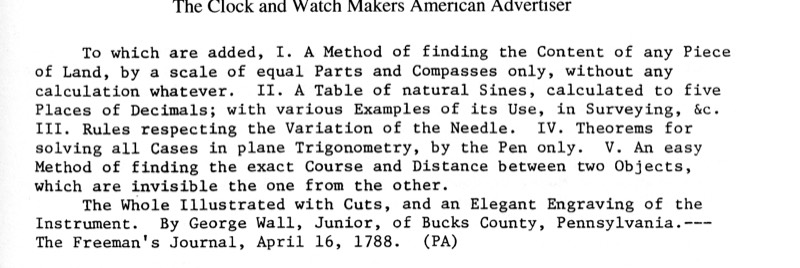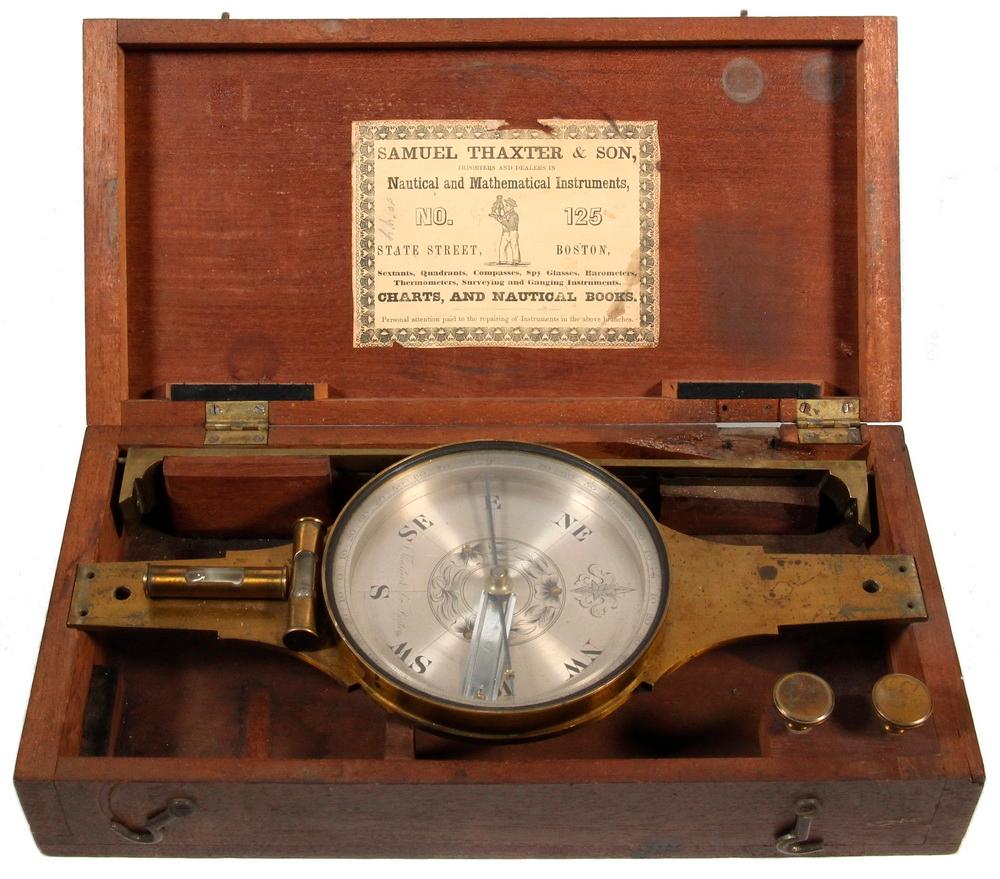
Samuel Thaxter
History
Samuel Thaxter
1769-1842
Thaxter is first listed in the 1796 Boston Directory as a mathematical instrument maker. In the 1822-23 edition, the business is listed as Samuel Thaxter & Son (Joseph H. 1801-1835). Samuel Thaxter's grandson, Samuel Thaxter Cushing (1821-1882), took over the business around 1843. Upon the death of Samuel Thaxter Cushing, his widow, Abby C. Cushing took over management of the business until 1905 at which time Herbert Risteen Starratt became manager. The last entry of the company (Samuel Thaxter & Son) in the Boston Directory is 1916.
Closely associated with the name of William Williams is that of another instrument maker of Boston, Samuel Thaxter (1769-1842). Thaxter was born in Hingham, Massachusetts, on December 13, 1769, the son of Samuel and Bathsheba (Lincoln) Thaxter. His father, who had been born in Hingham in 1744, was married on December 27, 1768, and he became the father of six children, of whom Samuel was the eldest. Samuel Thaxter, Sr., was apparently a man of means, for he is listed as a "Gentleman" and a loyal subject of King George. He resided on North Street in Hingham, near Ship Street. He died on the island of Campobello at the age of 44 years on May 27, 1788.
Samuel Thaxter, as well as several generations of his family before him, was born in the old Thomas Thaxter mansion that was built by the settler of that name in 1652. During the Revolution Samuel's father, Maj. Samuel Thaxter, concealed Tories from the Committee of Safety in a blind passage with a secret door in the old house. From there he smuggled them to Boston. At the massacre of Fort William, Major Thaxter was one of those captured by the Indians. While tied to a tree, he saw two French officers, and demanded whether this was the treatment they gave to commissioned officers. They allowed him to go free and he dragged himself to Fort Edward. Meanwhile, his comrades had reported him missing in action, and Dr. Gay preached his funeral sermon in Hingham shortly before Thaxter's return. The old Thaxter mansion was torn down in 1864.
Young Samuel Thaxter moved from Hingham to Boston, where he is first heard of in 1792. On June 14, 1792, Thaxter married Polly Helyer, the niece of William Williams. Within a month after the sale of Williams' property at public auction, Thaxter acquired the instrument-making business. Apparently the new owner of the premises required the business to move, and Thaxter established himself at No.9 Butler's Row. A month after the Williams auction Thaxter announced his new location in an advertisement in The Columbia Centinel of May 22, 1793.
Thaxter’s new location was a wooden store structure, on the north side of Butler’s Row that was owned by Andrew Hall and Eunice Fitch in 1798. It was in the rear of the north side of State Street, running from Merchants Row to the water. By 1796 Thaxter had moved from this location to No. 49 State Street, on the north side opposite to Broad Street, a brick store owned by Joseph Lovering & Sons, tallow chandlers. He continued to do business at this address until 1815, when he moved to 27 State Street, on the opposite side of the street. The new location was in a brick dwelling, opposite Merchants Row, that was owned by Joseph Clough, a housewright.
In about 1825 Thaxter moved his business once more, to 125 State Street, the east corner of Broad Street. This building was occupied by Charles Stimpson, Jr., a stationer who was one of the publishers of the Boston Annual Advertiser, which was annexed to the Boston Directory of 1826. The building was owned by Jonathan Phillips, the first mayor of Boston. In the cellar of the building was a victualler named Augustus Adams. The dominating feature of Thaxter's shop from the time it was opened was the carved figure of "The Little Admiral," the trade sign first used by Williams.
The firm of Samuel Thaxter eventually became Samuel Thaxter & Son, and it continued with that name until past the middle of the 19th century. Samuel Thaxter died in April 1842 at the age of 72 years. The entry for the firm in the 1843 City Directory listed S. T. Cushing as the new owner. From the initials, it seems likely that his full name was Samuel Thaxter Cushing, and that he was the grandson of the original Samuel Thaxter.
In 1796, shortly after his marriage, Thaxter made his home on Fish Street (now North Street), but in 1800 he was living at 54 Middle Street (Hanover Street). By 1807 he had moved to a new home on Fleet Street. His last home address, at the time of his death, was 41 Pinckney Street.
In the collection of the Massachusetts Historical Society there is a receipted bill (fig. 55) from Samuel Thaxter dated July 1, 1801, to Sam Brown, for touching up and repairing nine compasses for the French Corvelle Berceau.
Labels
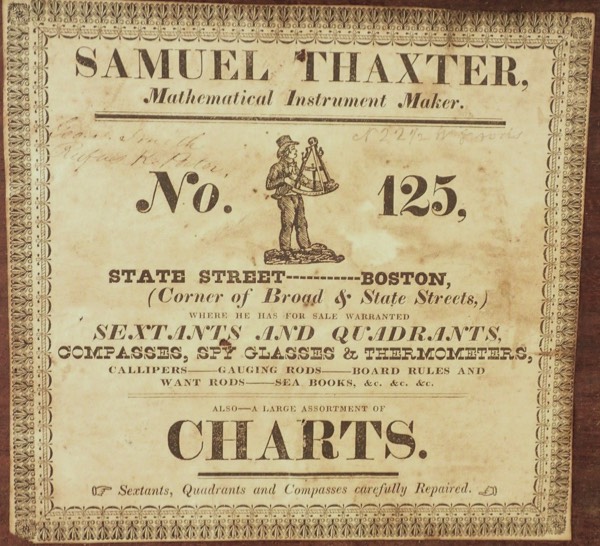
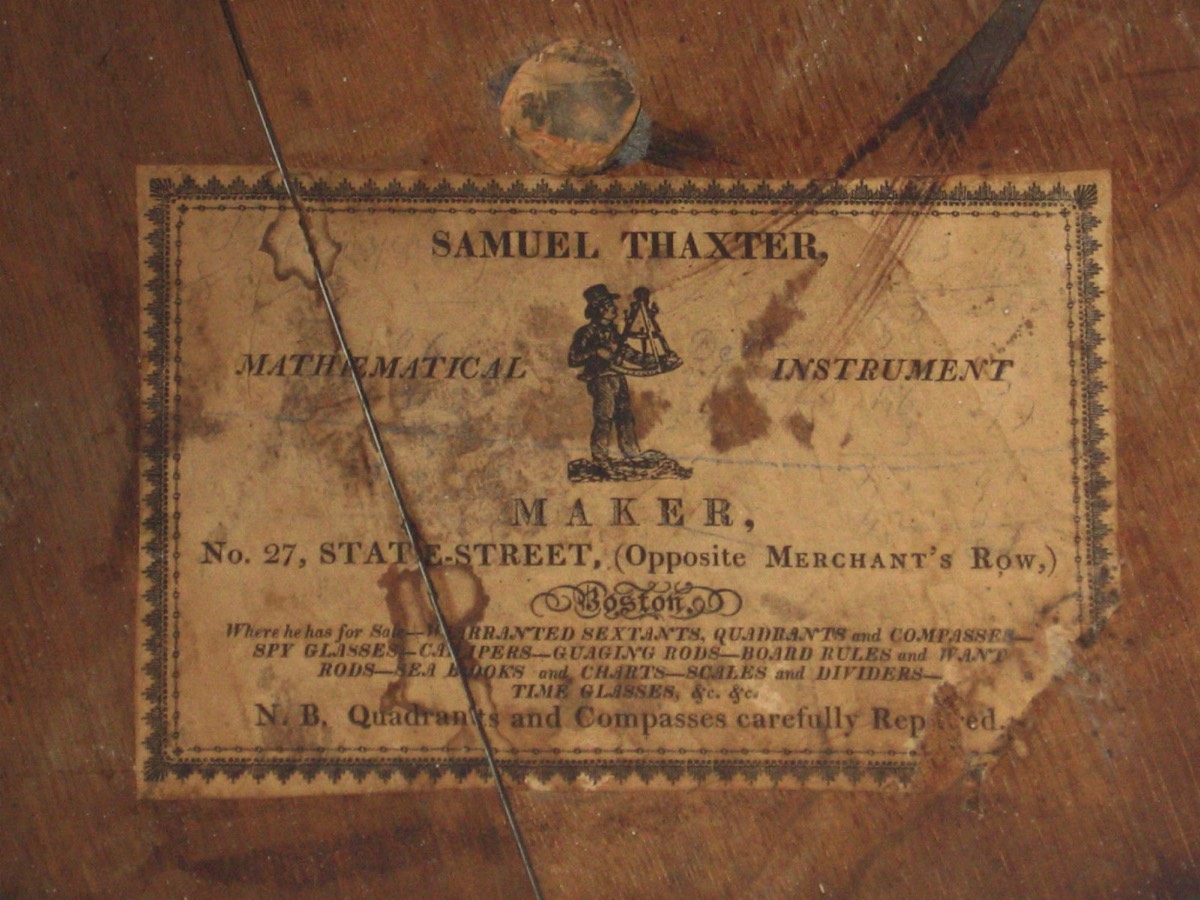
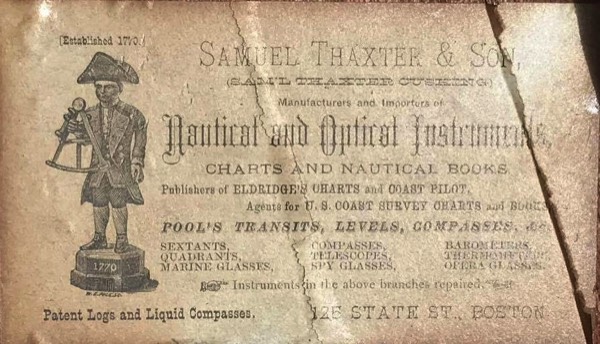

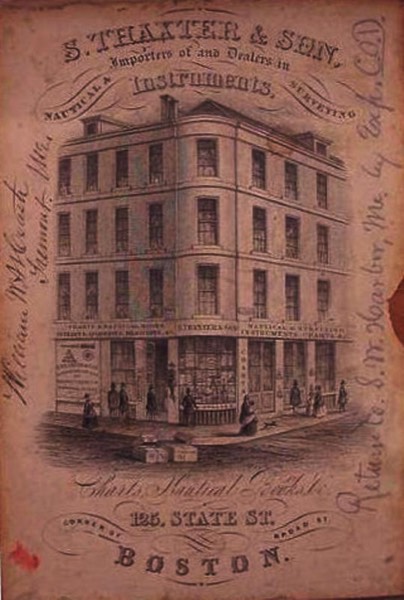
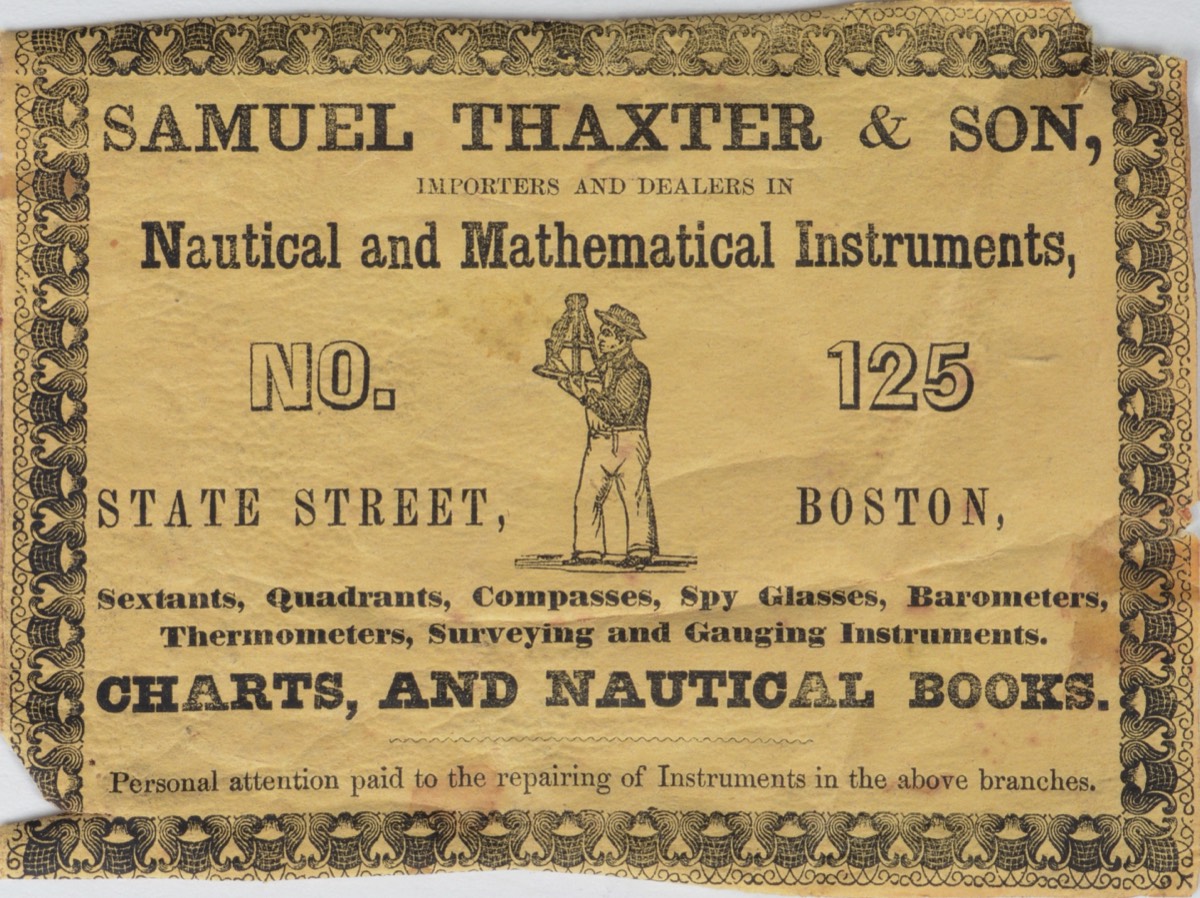
Additional Pictures


© 2020 Russ Uzes/Contact Me


